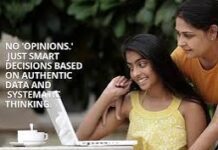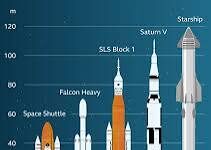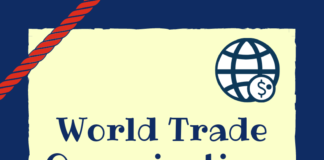Introduction:
Assessment methods in education have traditionally revolved around standardized testing, quizzes, and exams, but the evolving landscape of education demands a shift towards more innovative and comprehensive approaches. As we strive to prepare students for the complexities of the 21st century, it becomes imperative to revolutionize assessment methods. This article explores the limitations of traditional testing, the need for a change, and promising alternatives that can foster a more holistic and meaningful evaluation of students’ abilities and potential.
I. Limitations of Traditional Testing:
a. One-size-fits-all approach:
Traditional tests often follow a standardized format, neglecting the diverse learning styles, strengths, and weaknesses of individual students. This approach can be limiting, as it fails to capture the full spectrum of a student’s capabilities.
b. Stress and anxiety:
High-stakes exams can induce stress and anxiety in students, compromising their ability to perform at their best. This not only affects the accuracy of assessments but also has long-term consequences on students’ mental well-being.
c. Memorization vs. Understanding:
Traditional testing tends to prioritize memorization over a deep understanding of the subject matter. This results in a superficial grasp of concepts, hindering the development of critical thinking skills.
II. The Need for Change:
a. Preparing for Real-world Challenges:
The traditional testing model falls short in preparing students for real-world challenges that demand problem-solving, creativity, and collaboration. As the global landscape becomes more interconnected, students need skills beyond rote memorization to succeed.
b. Recognition of Diverse Talents:
Every student has unique talents and strengths that may not be adequately assessed through traditional methods. A shift in assessment approaches allows for the recognition and nurturing of a broader range of skills, including creativity, communication, and leadership.
c. Promoting Lifelong Learning:
The focus should extend beyond assessing what students know at a specific moment to evaluating their ability to learn and adapt over time. Lifelong learning skills are essential in a rapidly changing world, and assessments should reflect this paradigm shift.
III. Promising Alternatives:
a. Project-Based Assessments:
Implementing project-based assessments allows students to apply their knowledge in real-world scenarios. This method not only evaluates their understanding of the subject matter but also hones their practical skills, critical thinking, and creativity.
b. Portfolios and Continuous Evaluation:
Building portfolios over time can provide a comprehensive view of a student’s growth and achievements. Continuous evaluation, rather than relying solely on exam scores, offers a more accurate representation of a student’s progress.
c. Peer and Self-assessment:
Involving students in the assessment process fosters a sense of responsibility and self-awareness. Peer assessment encourages collaboration and allows students to learn from each other, promoting a supportive learning community.
d. Formative Assessments:
Regular, ongoing assessments provide valuable feedback that can guide both teachers and students in real-time. Formative assessments focus on the learning process, enabling adjustments and improvements before the final evaluation.
IV. Overcoming Challenges in Implementation:
a. Teacher Training and Support:
Implementing alternative assessment methods requires adequate teacher training and ongoing support. Educators must be equipped with the knowledge and tools to design and evaluate non-traditional assessments effectively.
b. Technology Integration:
Leveraging technology can enhance the effectiveness of new assessment methods. Online platforms, simulations, and digital tools offer opportunities for interactive and engaging assessments that go beyond the limitations of pen-and-paper tests.
c. Addressing Concerns of Standardization:
Critics of alternative assessments often raise concerns about standardization and comparability. Efforts should be made to establish clear evaluation criteria and benchmarks to ensure consistency while still allowing for individuality.
V. The Role of Stakeholders in the Transition:
a. Involving Parents and Communities:
Successful implementation of alternative assessments requires the support and understanding of parents and communities. Educating them about the benefits of these methods can foster a collaborative environment focused on the holistic development of students.
b. Policy Changes and Advocacy:
Advocacy for policy changes at the institutional and governmental levels is crucial. Policies should be aligned with the shift towards innovative assessment methods, encouraging experimentation and adaptation based on the evolving needs of education.
c. Establishing a Supportive Culture:
Creating a culture that embraces change and innovation is essential. Schools and educational institutions need to foster an environment where teachers, students, and administrators feel empowered to explore and implement alternative assessment methods.
VI. Challenges and Opportunities in Shifting Paradigms:
a. Resistance to Change:
Implementing new assessment methods may face resistance from various stakeholders, including teachers, parents, and even students. Addressing concerns, providing ample training, and demonstrating the benefits can help overcome this resistance.
b. Integrating Soft Skills Assessment:
While alternative methods emphasize holistic skills, integrating the assessment of soft skills, such as communication and emotional intelligence, poses a challenge. Developing effective frameworks for evaluating these skills is an ongoing process.
c. Adaptive Learning Platforms:
The integration of adaptive learning platforms and artificial intelligence in assessments holds potential. However, ensuring fairness, security, and ethical use of these technologies requires careful consideration and regulation.
VII. Promoting Inclusivity in Assessment:
a. Addressing Bias in Traditional Testing:
Traditional tests often exhibit biases that disadvantage certain groups of students. Alternative assessments can provide a more equitable way to evaluate students, minimizing the impact of cultural or socioeconomic factors.
b. Customizing Assessments for Individual Needs:
The one-size-fits-all approach of traditional testing can be detrimental to students with diverse learning needs. Customizable assessments tailored to individual learning styles and preferences foster a more inclusive educational environment.
c. Embracing Multiple Intelligences:
Recognizing and assessing various intelligences beyond the academic realm, as proposed by Howard Gardner’s theory, allows for a more comprehensive understanding of a student’s abilities, strengths, and potential contributions.
Conclusion:
In conclusion, the time has come to rethink and revolutionize assessment methods in education. Traditional testing, with its limitations and drawbacks, falls short of preparing students for the complexities of the modern world. By embracing innovative approaches such as project-based assessments, portfolios, and formative evaluations, we can create a more inclusive and accurate representation of students’ capabilities.
The shift towards alternative assessment methods requires a collective effort from educators, policymakers, and stakeholders in the education system. By prioritizing the development of critical thinking, problem-solving, and collaboration skills, we can better prepare students for success in a dynamic and interconnected global society. It is a transformative journey that not only benefits individual learners but contributes to the overall improvement of the education system.










